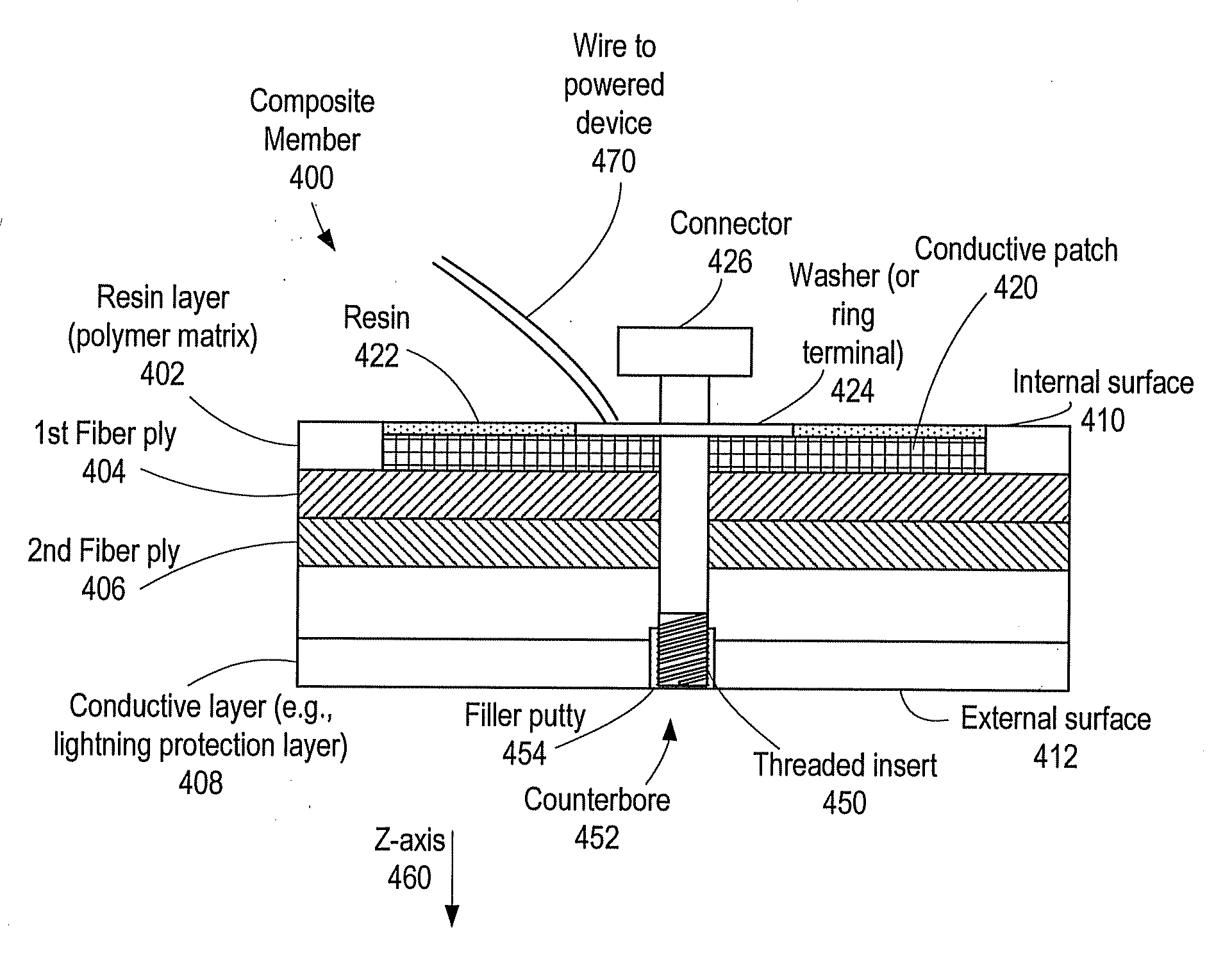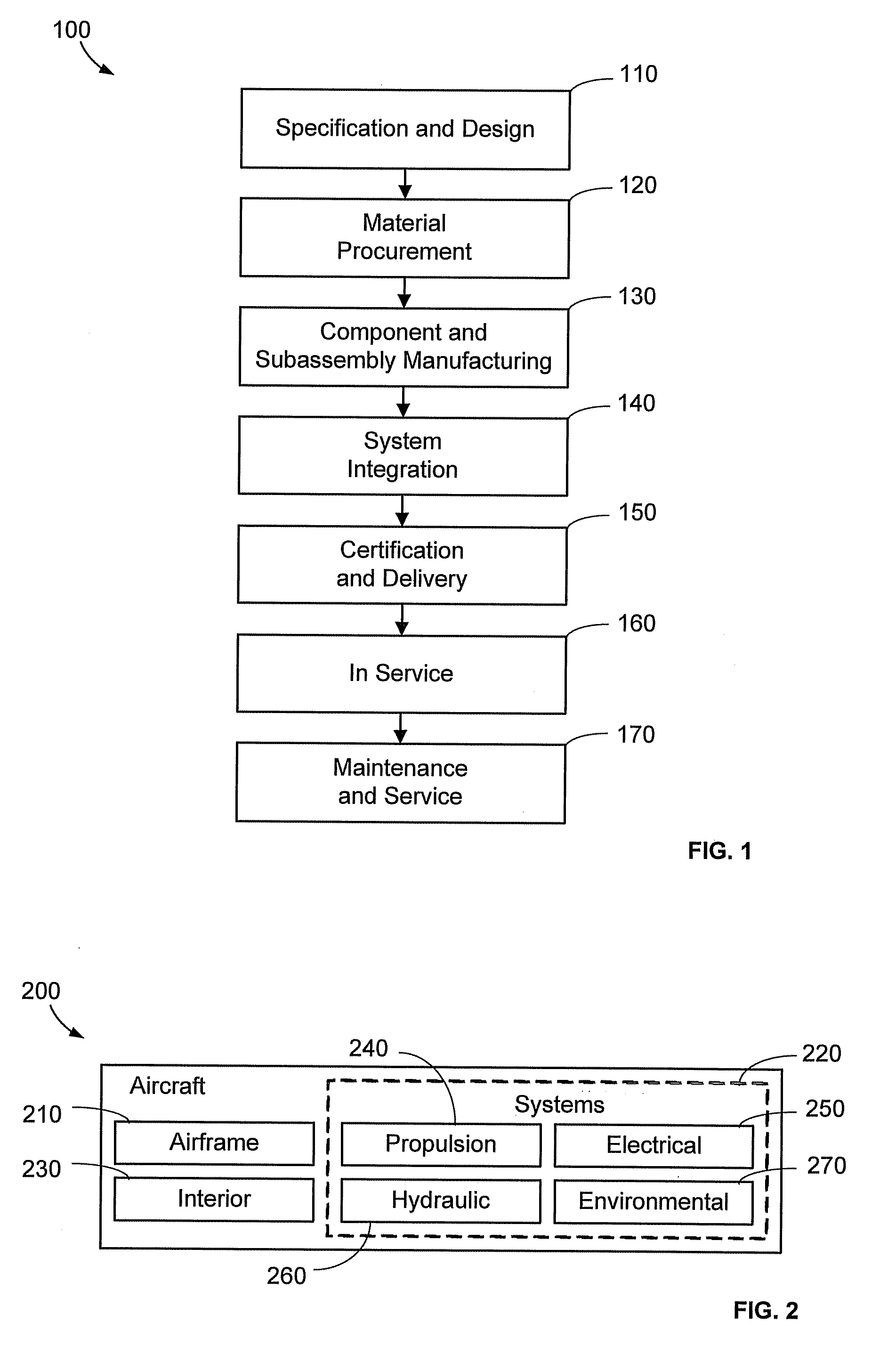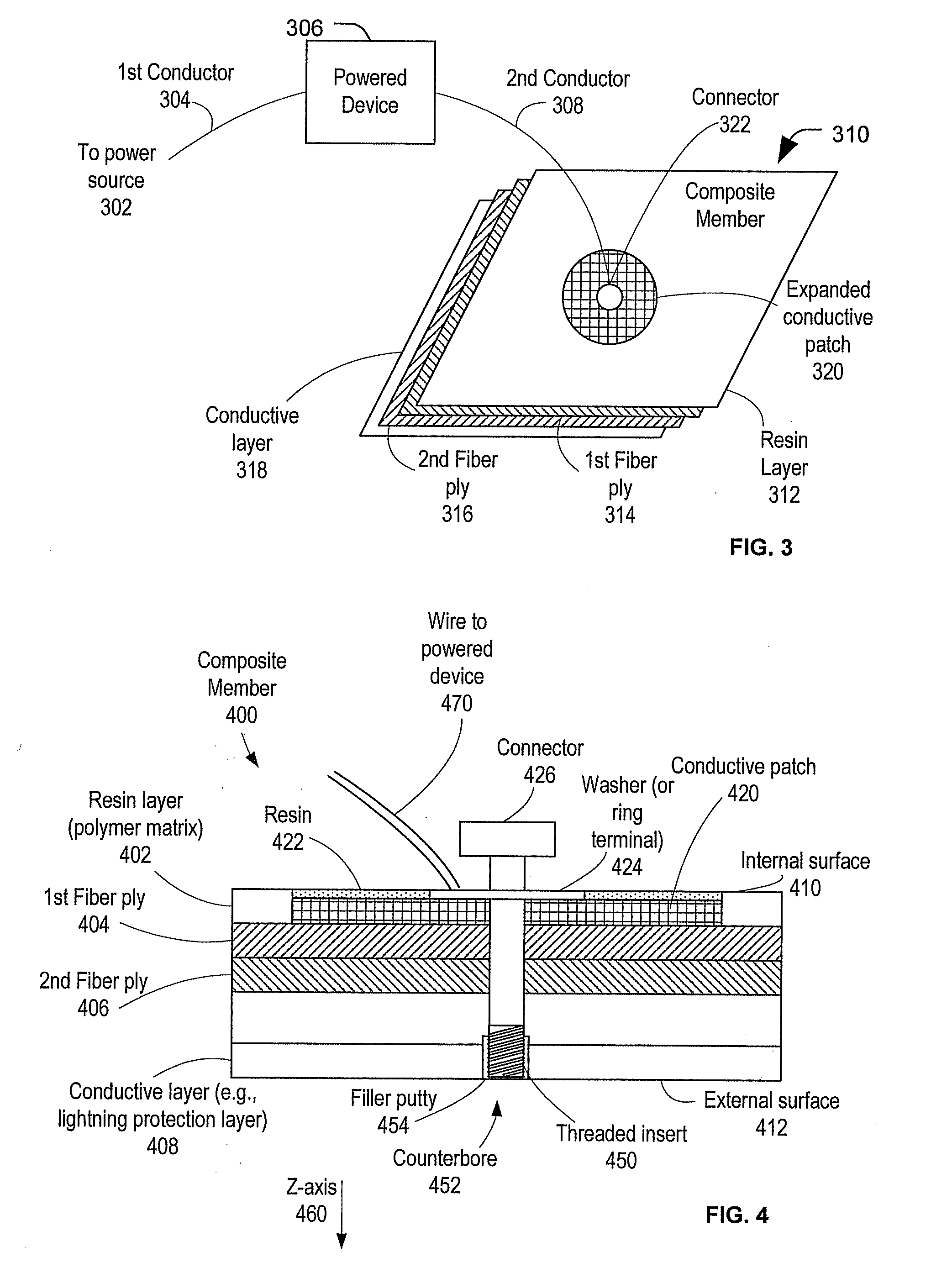Distributing Power in Systems Having a Composite Structure
a technology of composite structure and distribution system, which is applied in the direction of electrical devices, aircraft static dischargers, contact material materials, etc., can solve the problems of undesirable temperature change that results from passing current from the bolt to the fiber, the significant weight and complexity of the power distribution system of a large commercial aircraft, and the inability to meet the requirements of the system
- Summary
- Abstract
- Description
- Claims
- Application Information
AI Technical Summary
Benefits of technology
Problems solved by technology
Method used
Image
Examples
first embodiment
[0020]FIG. 3 is an illustration of a system to distribute power. The system includes a powered device 306 coupled via a first conductor 304 to a power source 302. The powered device 306 is also coupled to a connector 322 supported by a conductive patch 320 on a composite member 310 via a second conductor 308. In a particular embodiment, the composite member 310 may be a panel or other member of an aircraft, such as the aircraft 200 of FIG. 2. In this embodiment, the powered device 306 may be an aircraft component that receives power from the power source 302 via the first conductor 304.
[0021]In a particular embodiment, the composite member 310 includes a plurality of fibers bound by one or more resins. For example, the composite member 310 may include a carbon fiber reinforced polymer (CFRP) member, a composite of non-carbon fibers (e.g., boron fibers, metal fibers, etc.) bound by a resin or other continuous medium. For purposes of illustration in FIG. 3, the composite member 310 is...
second embodiment
[0027]FIG. 4 is an illustration of a system to distribute power. The system illustrated in FIG. 4 includes a composite member 400. In a particular embodiment, the composite member 400 includes a skin or structural member of a vehicle having a composite construction. For example, the composite member 400 may include a panel, a structural member, or a fuselage segment of an aircraft, such as the aircraft 200 of FIG. 2.
[0028]The composite member 400 may include a plurality of fibers, such as a first fiber ply 404 and a second fiber ply 406, bound by a polymer matrix. In FIG. 4, the polymer matrix is illustrated as a resin layer 402; however, the polymer matrix may be at a surface or surfaces of the composite member, intermixed with the plurality of fibers, at other locations of the composite member 400, or any combination thereof. In a particular embodiment, the polymer matrix is a continuous medium and the fibers of the fiber plies 404, 406 are a discontinuous medium of the composite ...
PUM
| Property | Measurement | Unit |
|---|---|---|
| temperature | aaaaa | aaaaa |
| temperature | aaaaa | aaaaa |
| operational temperature | aaaaa | aaaaa |
Abstract
Description
Claims
Application Information
 Login to View More
Login to View More - R&D
- Intellectual Property
- Life Sciences
- Materials
- Tech Scout
- Unparalleled Data Quality
- Higher Quality Content
- 60% Fewer Hallucinations
Browse by: Latest US Patents, China's latest patents, Technical Efficacy Thesaurus, Application Domain, Technology Topic, Popular Technical Reports.
© 2025 PatSnap. All rights reserved.Legal|Privacy policy|Modern Slavery Act Transparency Statement|Sitemap|About US| Contact US: help@patsnap.com



